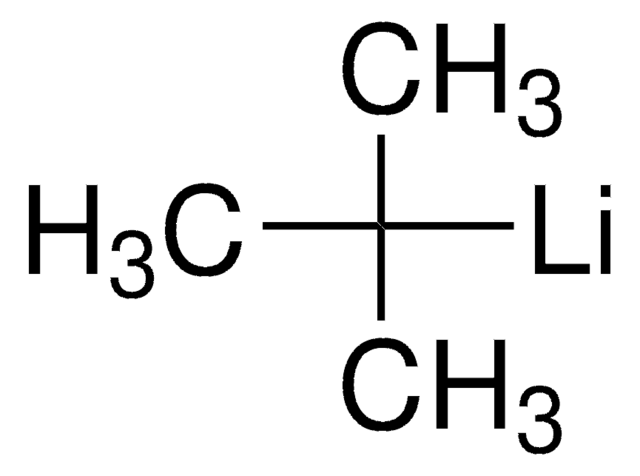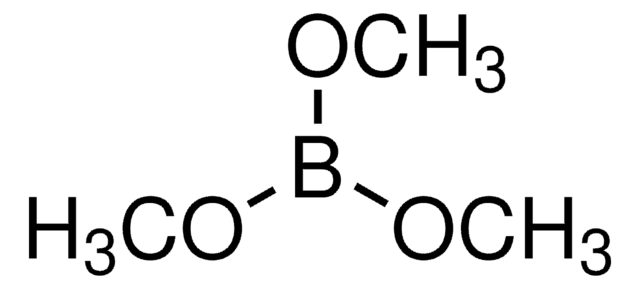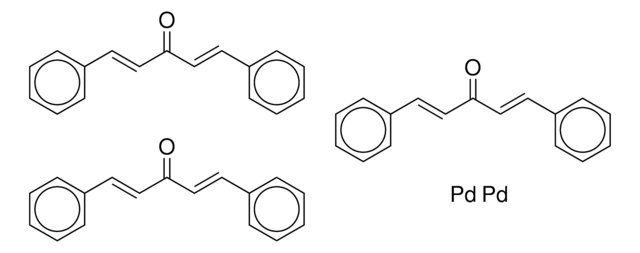939412
n-Butyllithium -Lösung

2.5 M (in PAO/hexanes mixture)
Synonym(e):
n-BuLi, Butyllithium, Butyllithium -Lösung, Lithium-1-butanid
About This Item
Empfohlene Produkte
Form
liquid
Qualitätsniveau
Konzentration
2.5 M (in PAO/hexanes mixture)
Farbe
colorless to yellow
Lagertemp.
2-8°C
SMILES String
[Li]CCCC
InChI
1S/C4H9.Li/c1-3-4-2;/h1,3-4H2,2H3;
InChIKey
MZRVEZGGRBJDDB-UHFFFAOYSA-N
Suchen Sie nach ähnlichen Produkten? Aufrufen Leitfaden zum Produktvergleich
Allgemeine Beschreibung
Anwendung
The product is also used in the following reactions:
- Anionic rearrangement reactions
- Metal-halogen interchange and transmetalation reactions
- Elimination reactions
- [1,2]- and [1,4]-Wittig rearrangement reaction
- Anionic homo-Fries rearrangement reaction
- Asymmetric carbolithiation
Leistungsmerkmale und Vorteile
Ähnliches Produkt
Signalwort
Danger
Gefahreneinstufungen
Aquatic Chronic 3 - Asp. Tox. 1 - Eye Dam. 1 - Flam. Liq. 3 - Pyr. Liq. 1 - Repr. 2 - Skin Corr. 1B - STOT RE 2 Inhalation - Water-react 1
Zielorgane
Nervous system
Zusätzliche Gefahrenhinweise
Lagerklassenschlüssel
4.2 - Pyrophoric and self-heating hazardous materials
WGK
WGK 3
Flammpunkt (°F)
88.7 °F
Flammpunkt (°C)
31.5 °C
Hier finden Sie alle aktuellen Versionen:
Analysenzertifikate (COA)
Leider sind derzeit keine COAs für dieses Produkt online verfügbar.
Wenn Sie Hilfe benötigen, wenden Sie sich bitte an Kundensupport
Besitzen Sie dieses Produkt bereits?
In der Dokumentenbibliothek finden Sie die Dokumentation zu den Produkten, die Sie kürzlich erworben haben.
Unser Team von Wissenschaftlern verfügt über Erfahrung in allen Forschungsbereichen einschließlich Life Science, Materialwissenschaften, chemischer Synthese, Chromatographie, Analytik und vielen mehr..
Setzen Sie sich mit dem technischen Dienst in Verbindung.








